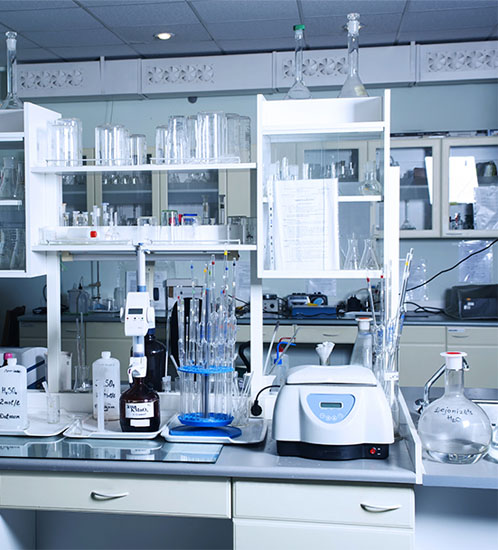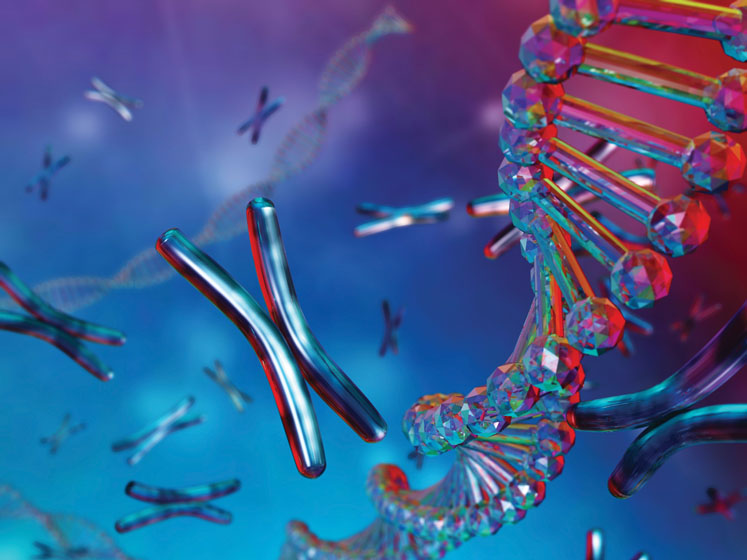More complex therapeutic modalities require more challenging methods to analyse them. Biopharma companies will not only need to navigate the difficulties of building robust analytical methods to test their CGT products, they must also ensure regulatory compliance in a rapidly changing legislative environment.
In this article, Chief Scientific Officer of BioAgilytix, Jim McNally, offers unique insight into the challenges and bioanalytical hurdles that the biopharma industry can expect when bringing their CGT products to market. He also explores the strategies that can be adopted to mitigate the impact of these difficulties, from planning ahead to prevent supply delays and outsourcing to alleviate capacity and compliance burdens.
A changing therapeutic landscape
Despite the first gene therapy trial being conducted more than 20 years ago, highly publicised instances of serious adverse effects in gene therapy trials have led to both safety concerns and slow growth in the CGT area.1,2 Subsequent therapies predominantly aimed to treat rare and orphan diseases with poor prognoses in which the benefits outweighed the safety risk.
With advancements in engineering techniques and technologies, CGTs have become significantly safer since they were first pioneered, encouraging biopharma companies to explore their use in a wider range of therapeutic areas.
Since the first CGT therapy gained approval by the US FDA in 2017, more quickly followed (rising to 22 by 2022). This number is forecast to increase further, with more than 1000 clinical trials for CGTs currently ongoing. By 2025, the FDA predicts that it will be approving 10–20 CGT products per year.3
The rising popularity of these therapies is mirrored in the global CGT market, which was valued at $4.99 billion in 2021 and is predicted to increase at a compound annual growth rate (CAGR) of 39.62% to $36.92 billion by 2027.4

A growing need for robust analytical programmes
The increasing interest in CGTs among biopharma developers has been driven by improvements in safety and the additional benefits they offer compared with more traditional therapeutics. As opposed to requiring routine infusions, CGTs have the potential to maintain their therapeutic benefits for years.
This can heavily reduce the treatment burden on patients and offset the upfront cost of treatment by necessitating fewer hospital visits. Biopharma companies have also started to recognise the potential of CGTs in therapeutic areas other than rare diseases, aiming to move into spaces with much larger patient populations.
As the potential for CGTs expands, so does the need for development and bioanalytical expertise in the space. These therapies tend to have a higher bioanalytical burden throughout development and clinical support compared with many drug programmes, requiring complex methods to elucidate complex CGTs.
It is important that robust bioanalytical programmes are built by those with experience and expertise in this new area. Assays must be designed to serve clinical programmes that can potentially last up to 10 years and consider any future changes to regulatory requirements that may arise. There are many challenges that can be expected throughout the lifecycle of these programmes and, as such, they require robust bioanalytical assay development and delivery to ensure that CGTs are successfully brought to market.
A shift towards new bioanalytical platforms
As biopharma companies begin to shift their focus towards these new drug modalities, they must consider new bioanalytical platforms. These platforms must incorporate technologies that can quantitate and detect CGT drug products as well as monitor their presence and activity with time. Technologies that were previously leveraged for use in other areas are now being heavily relied on for the bioanalysis of CGTs under good laboratory practice (GLP) conditions, including the following.
Quantitative PCR (qPCR): As a quantitative molecular-based tool to examine genetic material, qPCR can be used to detect the presence of specific transgenes by amplifying genetic material from very small amounts of sample material. This PCR method can be used to analyse genetically edited cells as well as detect the presence of viral vectors that could spread into the environment.
Flow cytometry: There is a strong reliance on cell-based analyses throughout cell therapy development as the cell itself is the drug. As flow cytometry is used to detect and characterise these cells using multiplexed markers while also measuring the patient’s immune response to them, it is an essential tool in CGT development.
Enzyme-linked immune absorbent spot (ELISpot): The ELISpot assay can be used to quantitatively measure cytokine secretion by a single cell, providing information regarding the magnitude of a cellular immune response to CGTs. For example, ELISpot can be used to detect T cell responses that could impact viral vector gene therapy outcomes.

Greater importance has also been placed on assays that can assess cellular immunogenicity. In the past, bioanalytical programmes would often place emphasis on the importance of determining the extent of the immune response by measuring antibodies in the blood.
With CGTs, the cellular response can be more potent and may be more clinically relevant than antibody responses. However, analysing the cellular response requires a larger blood draw from the patient, as well as additional methods to purify and isolate the cells. There are also additional sample logistics for the storage of cells to maintain viability, as opposed to the simple freezing method involved in serum storage.
Historically, many of these technologies would not have been used routinely in the assessment of drug pharmacokinetics. This means that guidance on assay design is limited and will require extensive expertise and a strong analytical understanding to develop a robust assay. In fact, pharmacokinetics takes on a completely different challenge when the drug can replicate and “die” with time.
Project-specific challenges
The bioanalytical requirements for a project are heavily dependent on the type of CGT product under development. This is evident when looking at two types of cell therapy: autologous and allogeneic therapies.
Allogeneic cell therapies: As allogeneic cell therapies introduce donor cells into the patient, they are associated with a higher safety risk compared with autologous cell therapies, which involve the editing of a patient’s own cells. The biggest challenge associated with allogeneic cell therapies is ensuring that foreign cells are not rejected. Bioanalysis will be required to characterise the cell therapy donor cells themselves as well as the patient’s immune response against the donor cells.
Autologous cell therapies: As the cells are more likely to be recognised as “self,” immune responses to the drug are less of a concern … but still require monitoring. However, as each individual patient’s cells are technically the drug, cells from each patient receiving treatment will need to be tested for potency and safety.
Consequently, a high volume of bioanalytical testing is required for autologous cell therapies. Each assay must be designed to be suitable for testing of cells from many individuals and be designed to be robust enough to account for possible differences between patient samples.
An abundance of data
Regardless of the type of CGT project and bioanalytical requirements, the number of assays associated with CGT programmes is often much greater compared with other biotherapeutics. Each of the platforms adopted in the bioanalysis of CGTs will also inherently generate a lot more data than would be produced when assessing less complex biotherapeutics; this is particularly true for flow cytometry. Deciding what data is relevant in these large and complex datasets is an arduous task and will require extensive raw computing power.

As a result, the bioanalytical assessment of CGTs can be a very long, expensive and time-consuming process. Consequently, it is imperative that these processes are optimised to achieve speed to market and deliver essential drugs to patients. Digitalisation, automation and electronic documentation should all be considered to improve efficiency and communications throughout the bioanalysis of CGTs.
Expertise to facilitate future regulatory compliance
As the CGT space is relatively new, there is currently little guidance available in terms of best bioanalytical practices to assess these drugs. As a result, those conducting the bioanalyses will be responsible for building practices that must be robust enough to be suitable for use for the duration of a clinical programme and designed with potential regulatory changes in mind.
Finding those with the relevant expertise and experience in the CGT space to ensure that drugs progress through the development pipeline to approval is a significant challenge. Many biopharma companies are already aware of the skills gap surrounding the CGT development space that stems from its sudden surge in interest and increased demand. However, there is also the hurdle of finding bioanalytical scientists that are appropriately trained to work under GLP or good clinical laboratory practice (GCLP) conditions.
Scientists capable of building robust bioanalytical platforms will not only have a strong scientific understanding of the drug, but an awareness of the regulations and compliance issues that surround it. They will know how the bioanalytical data will impact the clinical design, how the study at a clinical site is executed and how it impacts processes throughout manufacturing.
They will also have the confidence to reach out and gain advice from relevant regulatory bodies. It is therefore essential to be supported by scientists with a wealth of both bioanalytical expertise and a true understanding of development. In this way, bioanalytical programmes will be able to return data of comparable quality for many years despite changes in reagents, equipment and expectations.
A need to strategically plan ahead
Even when a robust bioanalytical programme is developed, there are still several challenges that could arise during delivery. One hurdle that has become increasingly evident following the COVID-19 pandemic is supply chain delays. With the critical need for essential COVID-19 treatments and vaccines, the biopharma industry saw a surge in demand.
As a result, samples, reagents and animals required for non-clinical studies have been in short supply. Commercially available human serum samples were particularly difficult to obtain, owing to both increased demand and fewer donors willing to travel.
Overcoming this challenge requires strategic planning and needs to be done as early in the CGT drug development process as possible. Careful supply chain management and bulk ordering and storage of essential bioanalytical consumables could help to mitigate the impact of future potential delays.
A lack of capacity
The increase in demand for COVID-19 treatments and vaccines also saw a rise in bioanalytical capacity and capability requirements. However, it is not always possible for developers to invest large lump sums into expansion programmes to meet demand.
Biopharma companies should consider outsourcing to dedicated clinical research organisation (CRO) partners with adequate capacity and capabilities to support the project.
These CROs should also have the capacity to store the materials needed to conduct analyses to circumvent delays.
By outsourcing to a reliable and transparent partner, biopharma companies can also shift the burden of regulatory compliance. With facilities designed with GLP and GCLP in mind, and having experience across a broad range of CGT projects, CROs are well placed to ensure regulatory compliance.
CROs are also often at the forefront of regulatory changes and may be involved in helping to shape the regulations of the future. This is critical in an ever-changing environment in which the sponsor can benefit from the broad experience of the CRO who works with many different sponsors in this space.
Key lessons
Clearly, many bioanalytical hurdles must be overcome to ensure that a CGT product can be validated and gain access to the market. Building a robust bioanalytical programme relies on finding scientists with both a strong understanding of molecular biology and the CGT development process. Biopharma companies will also need to carefully consider whether they wish to own the supply management, capacity and regulatory compliance burden … or outsource these to experienced CROs.
References
- L. Roberts, “Human Gene Transfer Test Approved,” Science 243(4890), 473 (1989): doi:10.1126/science.2911753.
- C.T. Deakin, I.E. Alexander and I. Kerridge, “Accepting Risk in Clinical Research: Is the Gene Therapy Field Becoming Too Risk-Averse?” Molecular Therapy 17(11), 1842–1848 (2009).
- https://bioprocessintl.com/bioprocess-insider/regulations/cell-and-gene-therapies-fda-expects-10-to-20-approvals-per-year-by-2025/.
- www.marketresearch.com/Arizton-v4150/Cell-Gene-Therapy-Global-Outlook-30688153/.




